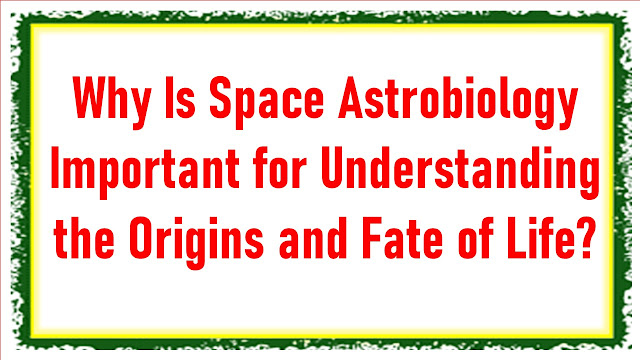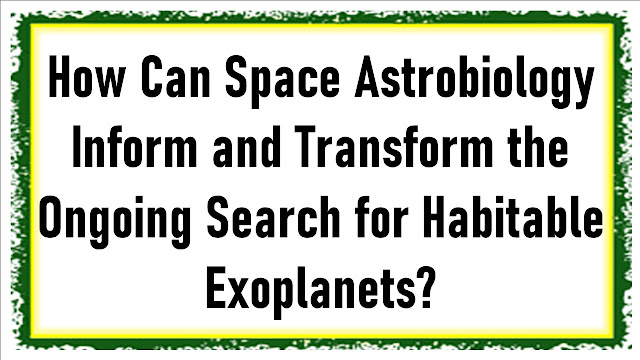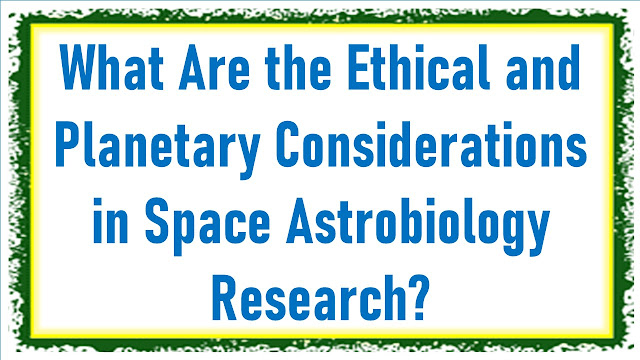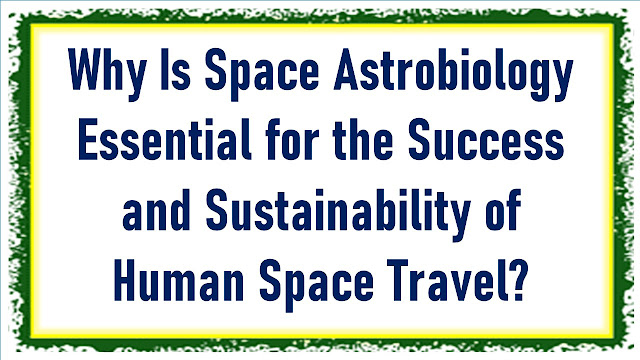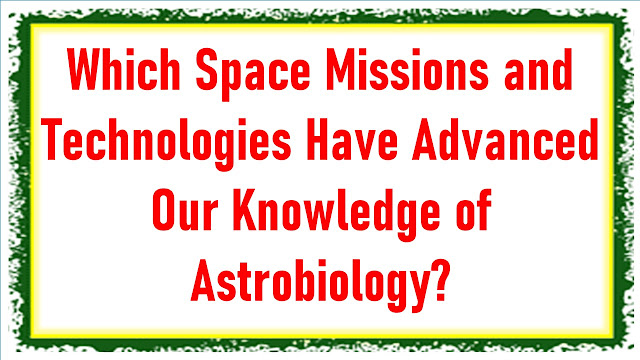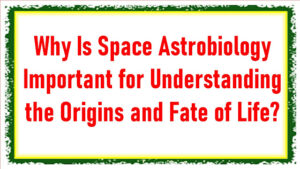
Introduction.
In this article, I’ll delve into the captivating realm of space astrobiology and explore why it holds such paramount significance in our quest to unravel the enigma surrounding the origins and eventual destiny of life in the universe. The pursuit of understanding life beyond Earth is not merely an exercise in curiosity; it is a profound philosophical and scientific endeavor that touches upon the fundamental questions of our existence. As we peer into the depths of the cosmos, we are compelled to contemplate whether life is an isolated phenomenon on our planet or a cosmic commonplace, and what implications these insights hold for the future of our species.
Space astrobiology offers a unique vantage point from which to investigate the origins of life, providing us with valuable clues about the potential habitability of distant celestial bodies. Moreover, it paves the way for contemplating the ultimate fate of life in the universe, as we ponder the existential threats and opportunities that await us among the stars. Through the lens of space astrobiology, we embark on an intellectual odyssey that not only informs our understanding of life’s origins but also prompts us to contemplate our role as cosmic voyagers in an ever-expanding universe.
- Exploring cosmic environments reveals life’s potential beyond Earth.
- Unveiling life’s origins informs its prevalence in the universe.
- Space astrobiology offers insights into Earth’s future habitability.
- Astrobiology advances our understanding of extreme environments.
- Alien life search impacts our perception of life’s significance.
- Space missions shape astrobiology’s role in planetary protection.
Exploring cosmic environments reveals life’s potential beyond Earth.
Space astrobiology plays a crucial role in expanding our understanding of life’s potential beyond the confines of Earth. By exploring cosmic environments such as other planets, moons, and even asteroids, scientists can gather valuable data that sheds light on the possibility of extraterrestrial life. These cosmic environments offer a wide range of conditions, from extreme cold and radiation to high-pressure environments, challenging the conventional notions of habitability. Yet, even in these harsh settings, astrobiologists have found microbial life forms on Earth that thrive, demonstrating the adaptability and resilience of life.
The study of cosmic environments, such as Mars, Europa, and Enceladus, provides valuable insights into the types of habitats that may exist elsewhere in the universe. For instance, the discovery of subsurface water on Mars and the potential presence of liquid water oceans beneath the icy crusts of moons like Europa and Enceladus raise intriguing possibilities for life beyond Earth. Understanding the conditions that could support life in these distant places informs our search for habitable exoplanets and moons throughout the cosmos.
By exploring cosmic environments, space astrobiology not only broadens our perspective on the potential for life in the universe but also drives the development of innovative technologies and exploration strategies. These advancements benefit not only astrobiology but also space exploration in general, paving the way for future missions aimed at discovering life beyond Earth.
Unveiling life’s origins informs its prevalence in the universe.
One of the central questions in space astrobiology is understanding the origin of life itself. By studying the conditions that gave rise to life on Earth, scientists gain insights into whether similar processes could occur elsewhere in the universe. This knowledge is critical for estimating the prevalence of life beyond our planet.
The study of life’s origins involves investigating the primordial soup of early Earth, examining the role of organic molecules, and exploring the chemistry and environmental conditions that fostered the transition from non-life to life. Astrobiologists also consider alternative scenarios, such as the possibility that life may have been delivered to Earth through panspermia, where microbial life could have traveled through space on meteorites or comets.
Understanding life’s origins informs the search for habitable environments on other celestial bodies and guides the selection of target locations for space missions. It helps scientists identify places where life might have arisen independently or where it could potentially thrive if introduced. By unraveling the mysteries of life’s beginnings, space astrobiology not only addresses fundamental questions about our own existence but also informs the search for life beyond Earth.
Space astrobiology offers insights into Earth’s future habitability.
The study of space astrobiology is not solely about exploring otherworldly environments; it also has profound implications for the future of our own planet. By examining extreme environments in space, astrobiologists gain insights into how life can adapt and survive under extreme conditions. These insights are invaluable for understanding Earth’s resilience and the potential consequences of climate change.
Extreme environments on Earth, such as hydrothermal vents in the deep ocean or acidic hot springs, can serve as analogs for conditions on other celestial bodies, such as Europa or Enceladus. Studying life in these extreme environments provides valuable data on the limits of habitability and the adaptations that enable organisms to thrive in challenging settings. This knowledge can be applied to assess Earth’s capacity to support life under changing environmental conditions, helping us predict and mitigate the effects of global warming and other environmental challenges.
Additionally, space astrobiology informs our understanding of planetary protection. As humans venture further into space, the risk of contaminating other celestial bodies with Earth microorganisms increases. Astrobiologists play a crucial role in developing protocols and technologies to prevent contamination and protect the pristine environments of other planets and moons. Thus, space astrobiology not only contributes to our knowledge of extraterrestrial life but also safeguards the potential habitability of other worlds and the future habitability of Earth.
Astrobiology advances our understanding of extreme environments.
Space astrobiology is intrinsically linked to the study of extreme environments, both on Earth and beyond. Extreme environments include places with extreme temperatures, high radiation, low atmospheric pressure, and other harsh conditions that challenge the limits of life. By delving into these environments, astrobiologists gain insights into the diversity of life forms that can exist and the mechanisms they employ to adapt and survive.
Extreme environments on Earth, such as the Atacama Desert, Antarctica’s Dry Valleys, or the deep-sea hydrothermal vents, serve as analogs for extraterrestrial settings. Studying extremophiles—organisms that thrive in extreme conditions—provides critical knowledge about the potential habitability of places like Mars or the subsurface oceans of icy moons. Understanding how life persists in these extreme environments informs the search for life beyond Earth and helps scientists refine their criteria for habitability.
Furthermore, the study of extreme environments has practical applications on Earth. It contributes to the development of biotechnology, bioremediation, and the discovery of novel enzymes and molecules with industrial and medical applications. Astrobiology’s focus on extreme conditions not only expands our knowledge of the universe but also enriches our understanding of life’s adaptability and its potential benefits for humanity.
Alien life search impacts our perception of life’s significance.
The quest for extraterrestrial life through space astrobiology has profound philosophical and societal implications. The search for life beyond Earth challenges our perception of life’s uniqueness and significance in the universe. The discovery of even microbial life elsewhere would revolutionize our understanding of biology and the place of humanity in the cosmos.
Finding extraterrestrial life would offer a fundamental shift in perspective, demonstrating that life is not an isolated phenomenon confined to Earth but a cosmic phenomenon with potentially countless manifestations across the universe. This discovery would prompt profound questions about the nature of life, its origins, and its potential diversity, opening up new avenues of scientific exploration and philosophical contemplation.
Moreover, the search for alien life has the potential to unite humanity in a shared endeavor that transcends national boundaries. It fosters international collaboration in space exploration and astrobiology research, promoting the peaceful use of outer space. The excitement and wonder generated by the prospect of discovering life beyond Earth can inspire future generations to pursue careers in science and technology, driving innovation and progress on a global scale.
Space missions shape astrobiology’s role in planetary protection.
Space missions, whether robotic or crewed, play a critical role in shaping the field of astrobiology and its contributions to planetary protection. As we explore other celestial bodies, the risk of contamination becomes a significant concern. Preventing Earth microorganisms from hitchhiking on spacecraft and potentially contaminating other worlds is essential to preserving the integrity of extraterrestrial environments.
Astrobiologists are instrumental in developing planetary protection protocols and techniques to minimize the risk of contamination. This involves the meticulous cleaning and sterilization of spacecraft, especially those sent to potentially habitable environments like Mars or the icy moons of Saturn and Jupiter. Space agencies like NASA and ESA collaborate closely with astrobiologists to ensure that missions adhere to stringent planetary protection standards.
Furthermore, space missions themselves are a means of exploring potential habitats for life and gathering data that informs astrobiology research. Robotic missions to Mars, for example, have provided valuable insights into the planet’s geological history and potential habitability. The data collected during these missions not only advances our understanding of life’s potential in the universe but also guides the planning of future astrobiology-focused missions.
Conclusion.
I hope this discussion has shed light on the critical role of space astrobiology in unraveling the enigmatic origins and ultimate destiny of life in the universe. In conclusion, the pursuit of astrobiology is not merely a scientific curiosity; it is a fundamental quest that has profound implications for humanity’s understanding of its place in the cosmos.
In the grand tapestry of the universe, space astrobiology serves as a beacon of exploration, probing the mysteries of life’s emergence on Earth and its potential existence beyond our planet. By studying extremophiles, analyzing extraterrestrial environments, and searching for signs of life in celestial bodies, we gain insights into the cosmic recipe for life and its adaptability. Furthermore, as we confront existential threats to life on Earth, space astrobiology offers valuable lessons on resilience and survival, helping us safeguard our own species. Ultimately, our investment in space astrobiology not only broadens our scientific horizons but also holds the promise of addressing one of humanity’s most profound questions: Are we alone in the universe?






